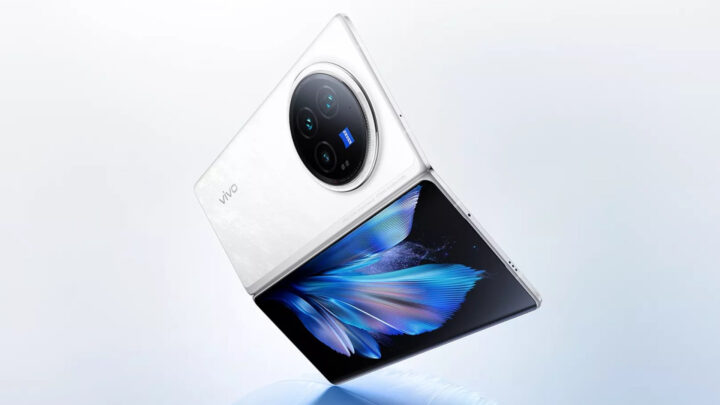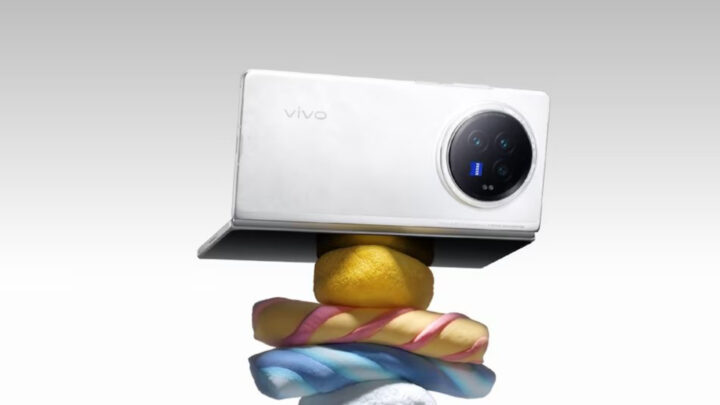[ad_1]
While Samsung was the best foldable phone maker for a few years, it is sad to see the company losing the race to its competitors from China, at least when it comes to technological breakthroughs. Rival smartphone brands from China are making foldable phones that are thinner, lighter, and they have better specifications than Samsung’s foldable devices.
Vivo has launched two new foldable phones—X Fold 3 and X Fold 3 Pro—that are thinner and lighter than the Galaxy Z Fold 5, but still manage to pack much bigger batteries.
Vivo X Fold 3 Pro has a 5,700mAh battery packed in an 11.2mm thin body
The Vivo X Fold 3 Pro is Vivo’s flagship foldable phone for this year. It has a 6.53-inch OLED cover screen and an 8.03-inch OLED foldable inner screen. They both have a 1Hz-120Hz variable refresh rate, 4,500 nits of peak brightness, HDR10+, and Dolby Vision. Both screens have in-display fingerprint readers. It also features an IPX8 rating for water resistance, just like the Galaxy Z Fold 5.
It is powered by the Snapdragon 8 Gen 3 processor, 16GB RAM, and 512GB/1TB internal storage. It has two 32MP selfie cameras, one each on its two screens. On the rear, it has a 50MP 1/1.3-inch primary camera with OIS, a 64MP telephoto camera with 3x optical zoom and OIS, and a 50MP ultrawide camera with autofocus. All its rear cameras can record 8K 30fps/4K 60fps videos.
It has stereo speakers, Wi-Fi 7, Bluetooth 5.4, NFC, IR port, and USB 3.2 Gen 2 Type-C port. It packs a 5,700mAh battery in a body that is just 11.2mm thin and weighs 236g. It has 100W fast wired charging, 50W fast wireless charging, and reverse wireless charging.
In China, the Vivo X Fold 3 Pro is priced at CNY 9,999 ($1,385) for the 512GB version and CNY 10,999 ($1,524) for the 1TB version.
Vivo X Fold 3 has a 5,500mAh battery but is just 10.2mm thin
The Vivo X Fold 3 and the Vivo X Fold 3 Pro have better specifications and a lower price than the Galaxy Z Fold 3. The Vivo X Fold 3, the more affordable of the two Vivo phones, has a 6.53-inch cover screen and an 8.03-inch inner foldable screen. Its LTPO screens reach 4,500 nits of peak brightness, have a 1-120Hz variable refresh rate, and feature Dolby Vision certification.
It uses the Snapdragon 8 Gen 2 processor, 12GB/16GB RAM, 256GB/512GB/1TB storage, and a 5,500mAh battery. It has two 32MP selfie cameras (one each on the cover screen and inner screen), a 50MP primary camera with OIS, a 50MP telephoto camera with 2x optical zoom, and a 50MP ultrawide camera with autofocus. All of this is packed in a body that’s just 10.2mm thin, weighs just 219g, and has an IPX4 rating for water resistance.
Other features of the phone include stereo speakers, a side-mounted fingerprint reader, 8K 30fps/4K 60fps video recording, Android 14, Wi-Fi 7, NFC, and 80W fast wired charging.
The Vivo X Fold 3 is priced at CNY 6,999 ($969) for the 12GB+ 256GB version, CNY 7,499 ($1,039) for the 16GB+256GB version, CNY 7,999 ($1,108) for the 16GB+512GB version, and CNY 8,999 ($1,246) for the 16GB+1TB version.
Watch our Galaxy Z Fold 5 review in the video below to know what we liked and disliked about it.
Author’s Note: Both new foldable phones from Vivo are thinner and lighter than the Galaxy Z Fold 5. They also feature bigger camera sensors for all their rear cameras, which should result in better image and quality, especially in low-light conditions. More importantly, they pack in batteries that are much bigger than the Galaxy Z Fold 5’s 4,400mAh battery. While the Galaxy Z Fold 6 is expected to be thinner and have a slightly bigger battery, it will likely not be able to match Vivo’s new phones in terms of thinness, weight, battery capacity, and charging speeds.
This should worry Samsung a lot. Even though these phones won’t likely reach global markets like Europe and the US, people will likely notice that Samsung’s foldable phones have far lower specifications in comparison. And it could reduce Samsung’s value in the eyes of consumers.
[ad_2]
Source Article Link



